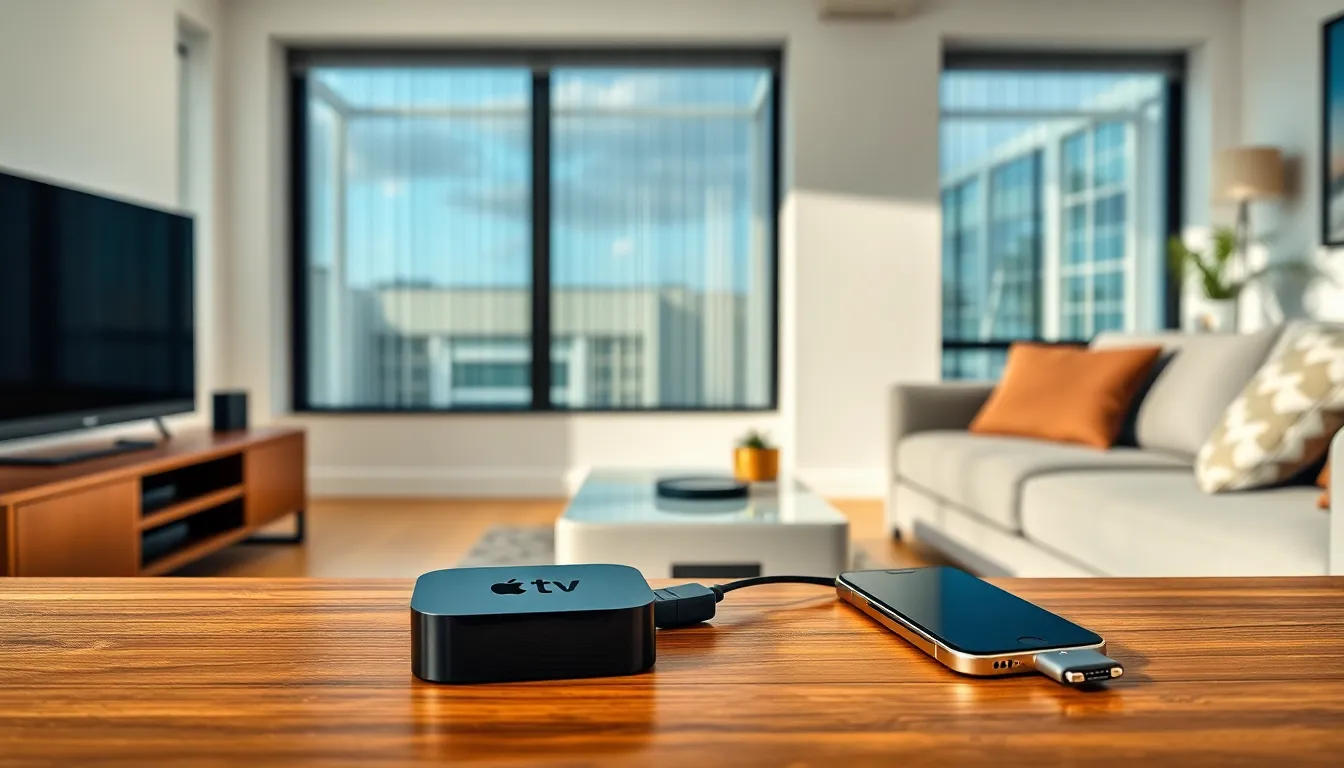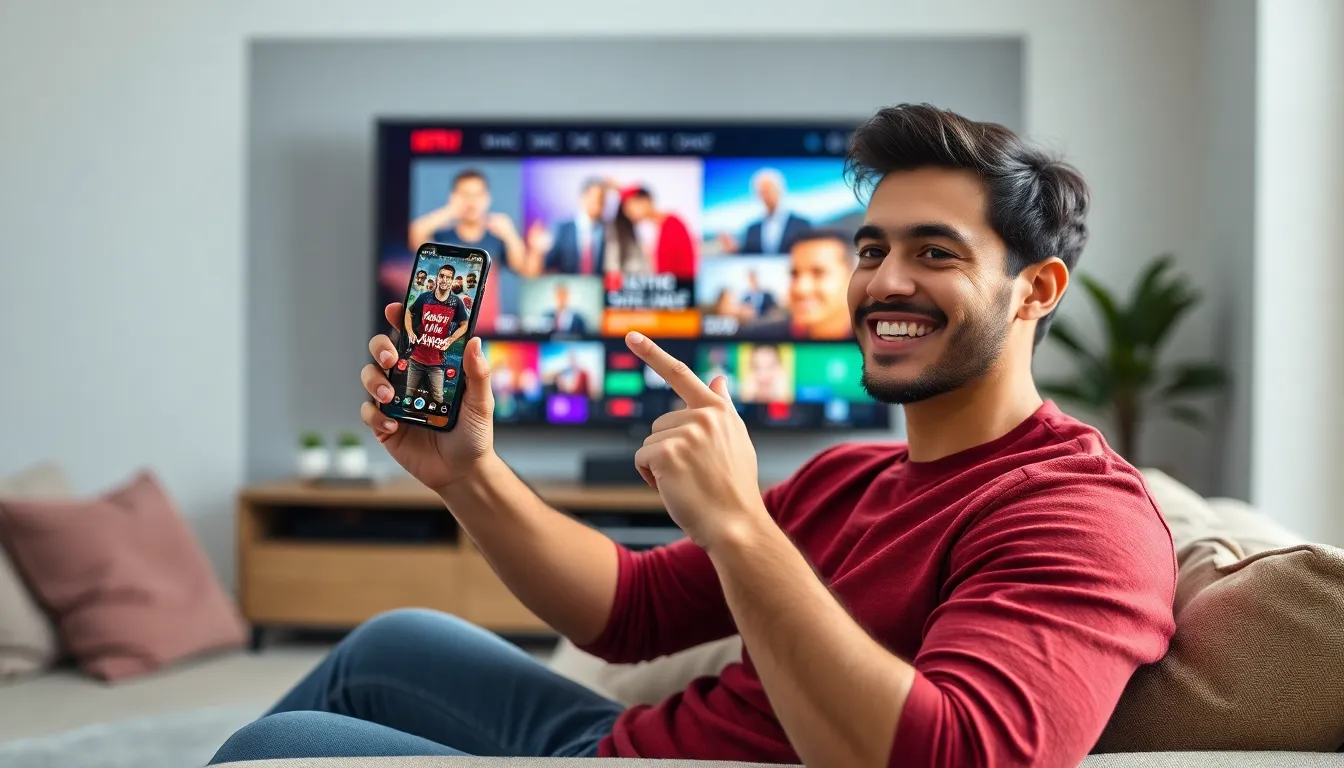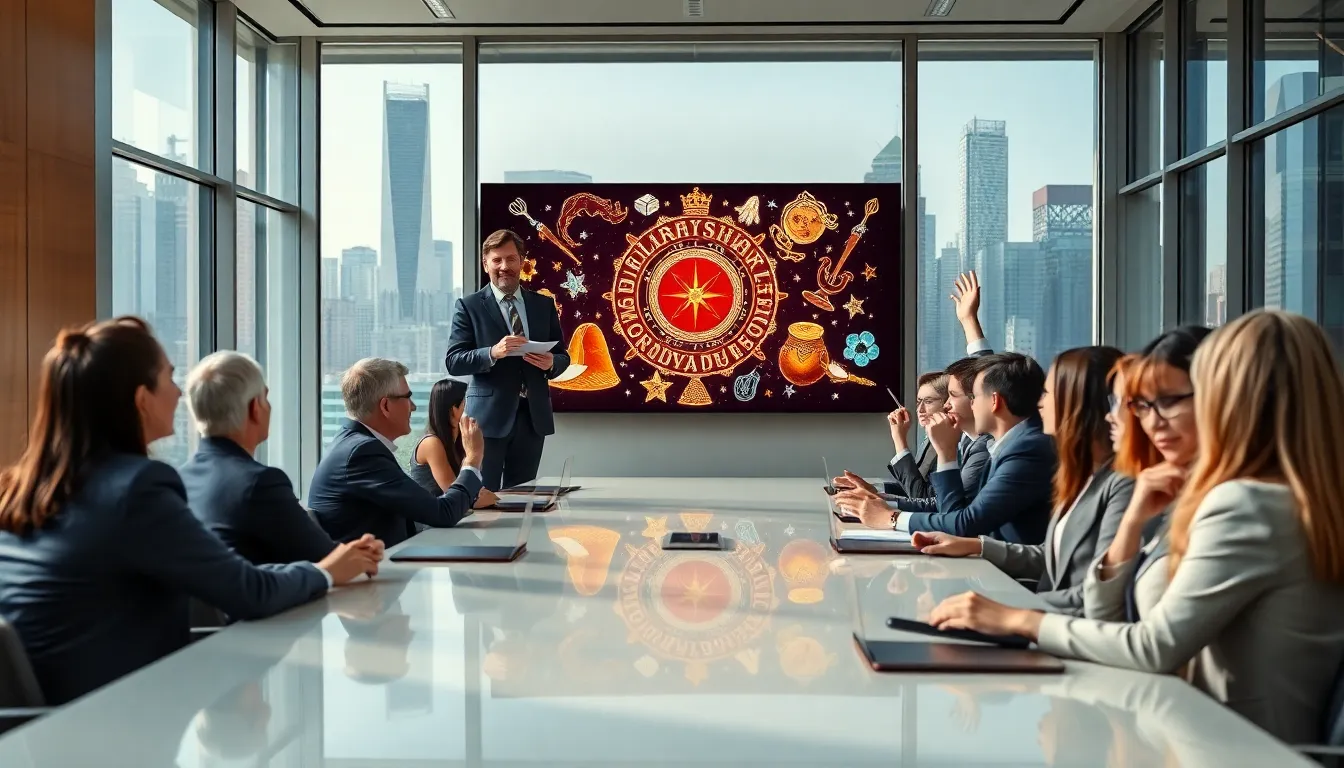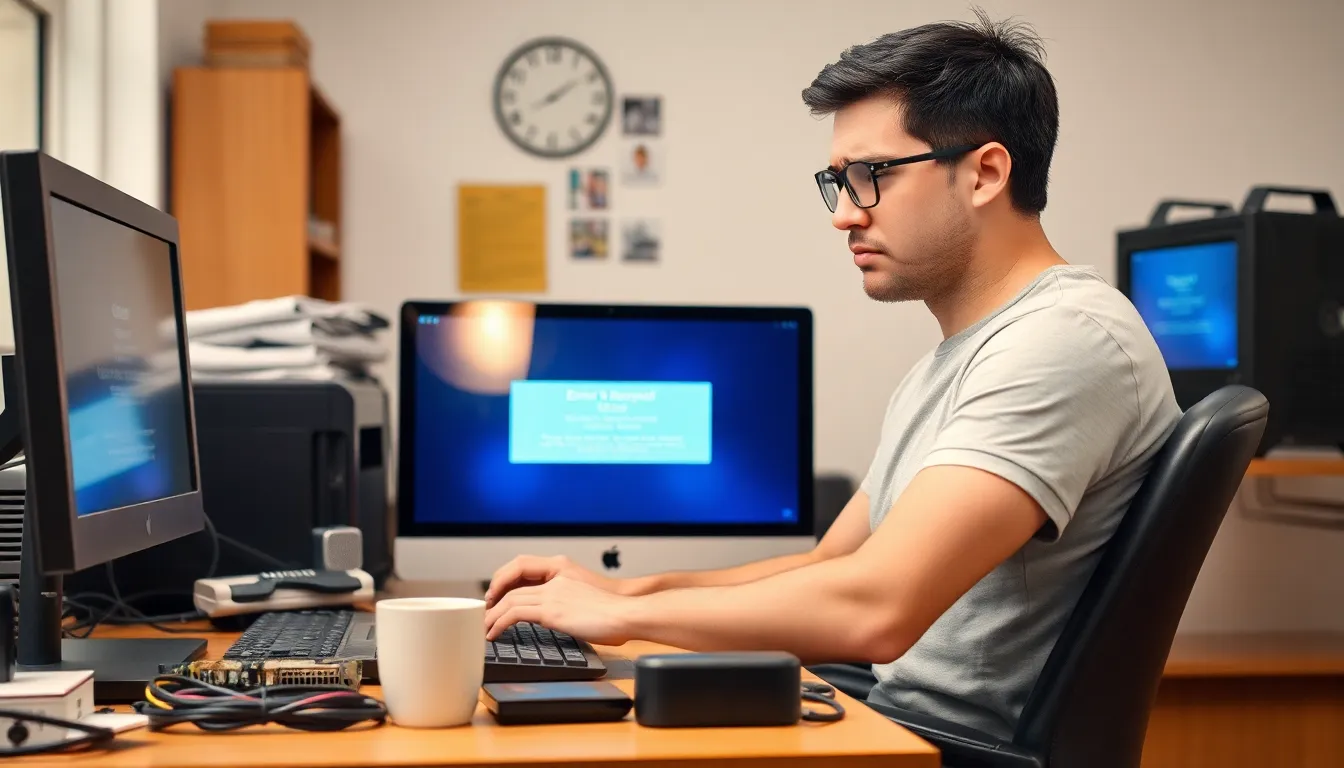In a world where binge-watching your favorite shows is practically a sport, knowing how to pair your iPhone to your TV can feel like discovering the Holy Grail. Imagine effortlessly casting your cat videos or that epic movie night with friends, all from the palm of your hand. It’s like having a magic wand that turns your TV into a personal cinema!
But wait! Before you dive into the tech abyss, let’s tackle this pairing adventure with a sprinkle of humor and a dash of professionalism. Whether you’re a tech whiz or someone who still thinks “streaming” is just for fish, this guide will break it down step-by-step. Get ready to transform your living room into the ultimate entertainment hub, because who doesn’t want to watch their favorite shows on a screen bigger than their iPhone?
Table of Contents
ToggleUnderstanding The Basics
Pairing an iPhone to a TV enhances the viewing experience by providing a larger screen for enjoying content. This simple connection allows users to stream videos, show photos, and play games seamlessly.
Importance Of Pairing iPhone To TV
Pairing an iPhone to a TV offers significant advantages for entertainment. Users can watch movies and shows on a larger display, enhancing visual clarity. Families can gather around the TV instead of crowding around a phone. Sharing presentations or photos during gatherings becomes easier, making connections more dynamic. This versatility transforms generic viewing into interactive experiences.
Common Use Cases
Common use cases for pairing an iPhone to a TV vary widely. Streaming platforms, such as Netflix and YouTube, allow users to enjoy favorite shows on a bigger screen. Video conferencing apps enable virtual meetings to take place in comfort. Gaming on a larger screen enhances visuals and gameplay, attracting attention from everyone. Utilizing the TV for displaying slideshows or family photos creates a more engaging atmosphere. These scenarios illustrate the practicality of connecting these devices.
Required Tools And Accessories

To pair an iPhone to a TV, certain tools and accessories streamline the connection process. The right equipment enhances the overall experience and ensures functionality.
Apple TV
Apple TV serves as an efficient way to connect an iPhone to a TV. Using this device enables users to stream content via AirPlay, creating a seamless experience without extra cables. Many consider this option for its ease of use and access to various applications, including streaming services and games. Setting up Apple TV involves connecting it to the same Wi-Fi network as the iPhone, allowing for instant mirroring of the device’s screen.
HDMI Cable
An HDMI cable is essential for a direct wired connection between an iPhone and a TV. This accessory supports high-quality audio and video transfer, making it ideal for presentations or gaming sessions. Users can connect the iPhone to the TV through a Lightning to HDMI adapter, ensuring compatibility. When using this method, simply plug one end into the iPhone and the other into the TV’s HDMI port for immediate display. The reliability of an HDMI connection makes it a preferred choice for those seeking a stable link.
Pairing Methods
Pairing an iPhone to a TV can enhance viewing experiences through various methods. Key methods include using AirPlay and an HDMI connection.
Using AirPlay
Using AirPlay provides a convenient wireless option for pairing an iPhone to a TV. The feature allows users to mirror their iPhone screen or stream content from compatible apps like Netflix and YouTube. Accessing AirPlay is simple; swipe down from the top right corner of the iPhone to open Control Center. Tap on “Screen Mirroring,” then select the target TV from the list of nearby devices. Once connected, enjoy seamless streaming with minimal setup.
Using HDMI Connection
An HDMI connection allows for a direct link between an iPhone and a TV, ensuring high-quality audio and video transfer. Users need a Lightning to HDMI adapter to establish this connection effectively. Connect the adapter to the iPhone and plug an HDMI cable into the adapter and TV. Switching the TV to the corresponding HDMI input displays the iPhone screen instantly. This method proves ideal for presentations or gaming sessions that require a stable connection.
Troubleshooting Common Issues
While connecting an iPhone to a TV, users may face various issues. Addressing these problems promptly improves the viewing experience.
Connection Failures
Connection failures often stem from network issues or device compatibility. Restarting both the iPhone and the TV frequently resolves these problems. Checking Wi-Fi settings helps ensure the devices are on the same network. Additionally, enabling Bluetooth on the iPhone can enhance connectivity. Users should be mindful that certain television models might require updates for compatibility. Verifying that the TV is set to the correct input source simplifies the process. Lastly, using a stable router can help maintain a consistent connection.
Audio/Video Sync Problems
Audio and video sync problems disrupt the viewing experience significantly. Users can troubleshoot this by refreshing the connection through the AirPlay settings. Adjusting the audio delay setting on the TV also improves synchronization. If streaming content from specific apps, closing and reopening the application might help. Switching to a wired HDMI connection could eliminate potential streaming delays. Ensuring that all devices are running the latest software versions can remedy some common sync issues. Reducing the distance between the iPhone and the TV often results in a more seamless experience.
Tips For Optimal Performance
Optimizing the experience of pairing an iPhone to a TV involves a few essential considerations. Following these tips enhances connectivity and overall performance.
Ensuring Strong Wi-Fi Connection
A stable Wi-Fi connection significantly improves streaming quality. Keep the iPhone and TV close to the Wi-Fi router for optimal signal strength. Eliminating obstacles such as walls or large furniture helps maintain a strong connection. Checking the internet speed also ensures it meets the requirements for streaming, with at least 25 Mbps recommended for 4K content. Prioritizing devices on the network can boost performance during streaming sessions. If issues arise, restarting the router often resolves connectivity problems.
Updating Software
Regular software updates are crucial for seamless performance. Both the iPhone and TV should have the latest software versions installed. Checking for updates on the iPhone can be done through the Settings app under General and Software Update. For the TV, accessing settings usually reveals available software updates. Ensuring compatibility between devices prevents connection issues and enhances functionality. It’s prudent to enable automatic updates whenever possible, streamlining the process and protecting against possible security risks.
Pairing an iPhone to a TV opens up a world of entertainment possibilities. Whether it’s streaming the latest shows or sharing cherished memories with family and friends, this connection transforms any living space into an engaging hub. With simple methods like AirPlay and HDMI, users can easily enhance their viewing experience.
Troubleshooting common issues and optimizing performance ensures smooth connectivity. By keeping devices updated and maintaining a strong Wi-Fi signal, users can enjoy high-quality audio and video. The journey to a more immersive entertainment experience is just a few steps away, making it worth exploring the various ways to connect an iPhone to a TV.






